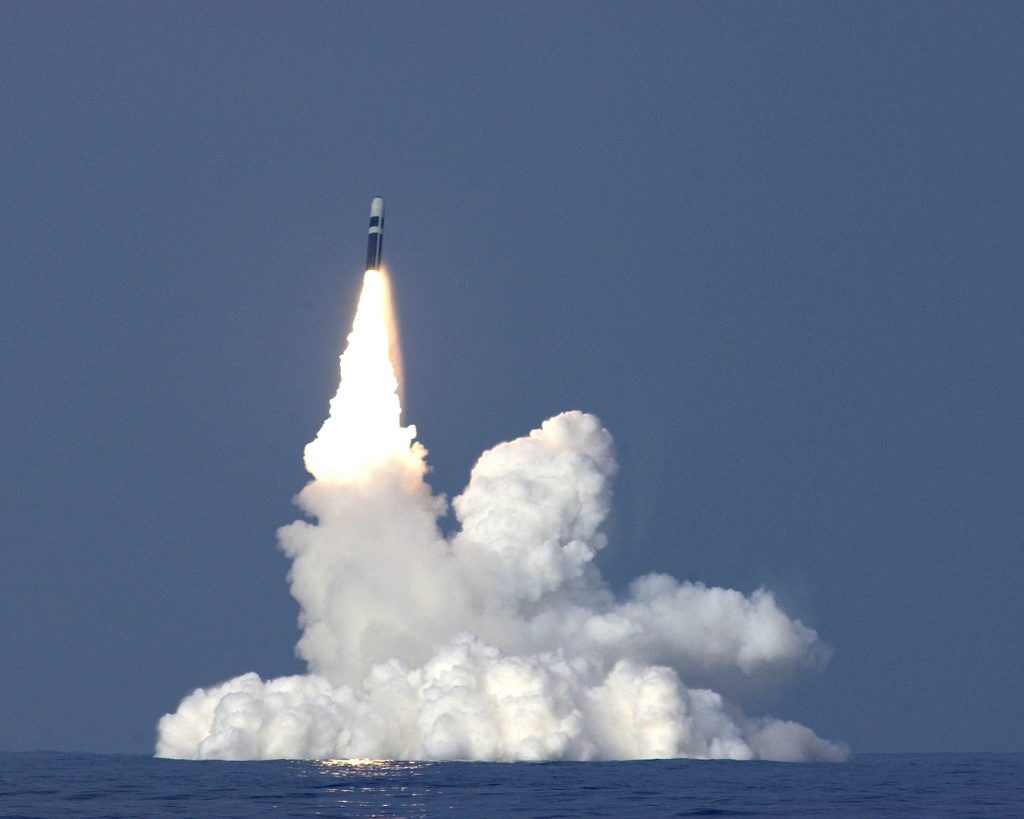SDR: UK sets goal of 12 SSN-AUKUS boats from late 2030s
The UK’s Labour Government has set the goal of procuring up to 12 nuclear powered attack submarines (SSN) from the SSN-AUKUS class as a replacement for the seven Astute class SSNs currently in service, according to a 1st June announcement. The new SSNs are expected to be manufactured and delivered from the late 2030s, despite the last Astute only coming into service at the end of the 2020s.
The goal has been set in response to the British government’s Strategic Defence Review (SDR), which calls for clarity around the expected numbers of SSN-AUKUS class boats that the UK intends to procure, which is seen as important for the UK’s industry to anticipate the capacity required.
“Confirming the intended numbers of SSN attack submarines would provide clarity on the required build capacity and tempo for all nuclear-powered submarines,” the SDR states. Indeed, the government announcement makes it apparent that a lot of work is required to meet this capacity.
The plan anticipates the build of a new submarine every 18 months at the BAE Systems Barrow-in-Furness shipyard and the Rolls-Royce plant in Raynesway, which builds the nuclear reactors that will power the submarines. If carried out, this would lead to a significant investment and likely expansion of capacity at both sites.
This is naturally welcome news, however the timelines and funding commitments are yet to be made and the whole programme carries significant risk. The announcement also makes clear that “up to 12” of the class will be procured, leaving space for that number to be revised down if required.
“Both the UK’s sovereign warhead programme and the UK’s conventionally-armed submarine fleet will make Britain and NATO safe for decades to come.” British MoD.
The SSN-AUKUS class is still under development with more than £4 billion (€4.60 billion/$4.97 billion) in contracts already awarded to BAE Systems, Babcock, and Rolls-Royce which is expected to take the design up to its final state by 2028. Further investment is expected from Australia to support the expansion of the Rolls-Royce facilities and its own procurement of the SSN-AUKUS class.
Additionally, submarine programmes are difficult to complete for several reasons. The UK’s Astute class that the SSN-AUKUS is expected to replace has repeatedly faced cost overruns and production delays arising from technical issues, supply chain challenges, increased labour costs, design changes, and inflation. The cost of the Astute programme, which will deliver seven SSNs is estimated at £12.2 billion.
In fairness to BAE and the MoD, many of the challenges with the Astute programme arose from the post Cold War collapse in the UK’s submarine industry. The winner of the Astute contract, GEC Marconi, had shed its most experienced designers and its workforce at the Barrow-in-Furness workforce had fallen from 13,000 to just 3,000. This led to a loss of experience and key skills that had to be rebuilt, the shipyard now has 10,000 staff and is expected to increase this to 17,000. The shipyard is in the process of building the final Astute, as well as the Dreadnaught class which carries the UK’s nuclear deterrent.
Nuclear deterrence

A Trident II D5 Missile breaking the surface, having been fired from HMS Vanguard a Strategic Missile Submarine. Credit: Lt Stuart Antrobus/UK MOD © Crown copyright 2005
This plan comes hand-in-hand with a significant investment of £15 billion (€17.76 billion/$20.27 billion) in replacing the UK’s sovereign nuclear warhead under a programme called ASTRAEA. The maintenance of the UK’s existing stockpiles is also indicated as a critical requirement within the SDR. The SSN and ASTRAEA together are expected to support 30,000 jobs in the UK’s nuclear enterprise, and double the number of apprenticeships and graduate roles over the next ten years.
Not all of the money will be spent on developing, procuring and building nuclear warheads, however. It is clear that a significant sum will be required for modernising the infrastructure at the UK’s Atomic Weapons Establishment (AWE). The AWE is an MoD research facility that provides the design, development and production of the UK’s nuclear warheads. It is a part of the UK’s Defence Nuclear Enterprise (DNE), which is the overarching organisation for all of the elements that support and deliver the UK’s nuclear deterrent, including the Defence Nuclear Organisation, AWE, Strategic Command, Royal Navy, and Submarine Delivery Agency.
The SDR states that investment is required in, “critical elements of the DNE’s infrastructure to adapt naval bases and manufacturing processes, supporting growth to sustain future fleet needs and weapons requirements.” It is worth noting that the DNE is a very significant cost for the UK, amounting to around 18% of the UK’s annual defence budget, with a ten-year forecasted cost of £118 billion (€139.83 billion/$155.76 billion). However, Madelain McTernan, the Chief of Defence Nuclear, told the UK’s Public Accounts Committee (a committee within a legislature whose role is to study public audits), that she expected that forecast to increase by £10 billion as a result of upward pressures. This brings the total estimated cost of the DNE out to 2035 to around £130 billion (€154.18 billion/$172.25 billion).
Calibre comment
The DNE is an increasingly important capability for the UK and NATO – the UK’s nuclear deterrent is committed to NATO and defence of the allies, however, it does require recapitalisation. For instance, the UK has 225 nuclear warheads with no more than 40 at sea at any one time, allowing for five Trident II missiles per Vanguard class submarine, each armed with four warheads. However, in a full-scale war, it would be desirable to arm each missile with eight warheads, and each submarine with 16 missiles. This is because Russia has its own strategic air defence system protecting Moscow, the A-235, which could reduce the likelihood of a successful nuclear strike. More warheads from more missiles increases the chances of success, which in turn increases the deterrence of the capability.
The 2021 SDR indicated that the total number of warheads would be increased to 260, reversing earlier commitments to actually reduce the UK’s stockpile of nuclear warheads as well as the limits on the number of missiles carried by the continuous at sea deterrence (CASD). Moreover, it is clear from the SDR that the UK is placing a significant focus on its air and naval power, with autonomous systems expected for both and a commitment to increasing capability over the next decade. This is likely to include a hybrid approach to the carrier fleet, with crewed, uncrewed, and autonomous systems to be deployed on the carriers in future missions.
The SSN-AUKUS class would be used in support of the CASD, providing an attack capability against adversary shipping as well as a land-attack capability from vertical launch cells. If 12 are produced, the Royal Navy may find additional challenges with crewing and deploying the submarines, and future British governments will also inherit increased operational costs. This has been a recurring theme for the British armed forces over the past two decades. They have been routinely under-resourced, with many capabilities now gapped, leaving expensive holes in the UK’s ability to fight that must be filled, likely at great cost. This is why the SDR places an emphasis on warfighting – it is partly about procuring capabilities that match the threat, but also about ensuring those capabilities and the forces are able to deploy them.
By Sam Cranny-Evans, published on 3rd June, 2025. The featured image shows HMS Astute as she sailed up the Clyde estuary into her home port of Faslane, Scotland for the first time following the journey from Barrow-in-Furness shipyard. Credit: Andrew Linnett/UK MOD © Crown copyright 2023

Sign Up for Updates!
Get insider news, tips, and updates. No spam, just the good stuff!






